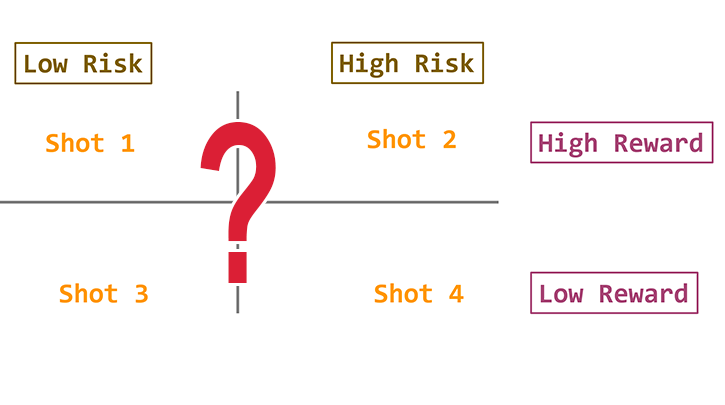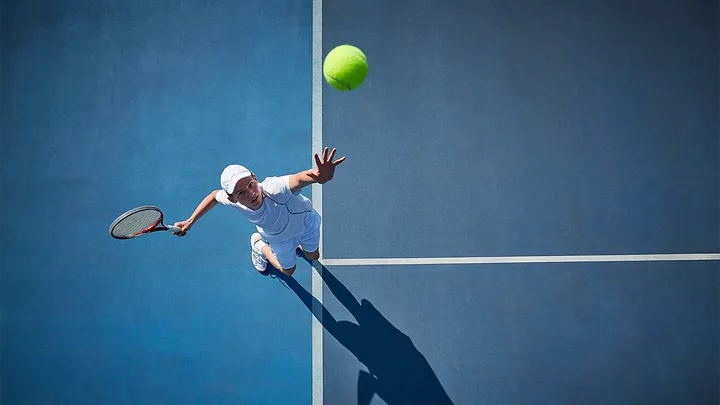When you look down a microscope at a tennis string, you see the remarkable hidden structure. The string itself only 1.2mm across contains hundreds of micro strings bonded together. Each one helping the string do two import jobs:
Bounce back without breaking
Bounce back without deforming
You might think it does these pretty well, and you would be correct, most players can play hundreds of times, each with maybe a hundred game points and 300 hits, altogether maybe 300,000 strikes of the ball before the string either breaks or loses elasticity. Impressive for sure! But wait why do strings go bad at all? What is going on?
Notching
Modern strings are so tough, they usually wear down before they snap. This happens at points of friction especially where the strings cross over each other. These wear points are visible as “notches” and tangible as stings “stuck” together, and audible as clicking sounds when you move the strings. Eventually the notch will become so big, it eats almost all the way through and then the strings break.
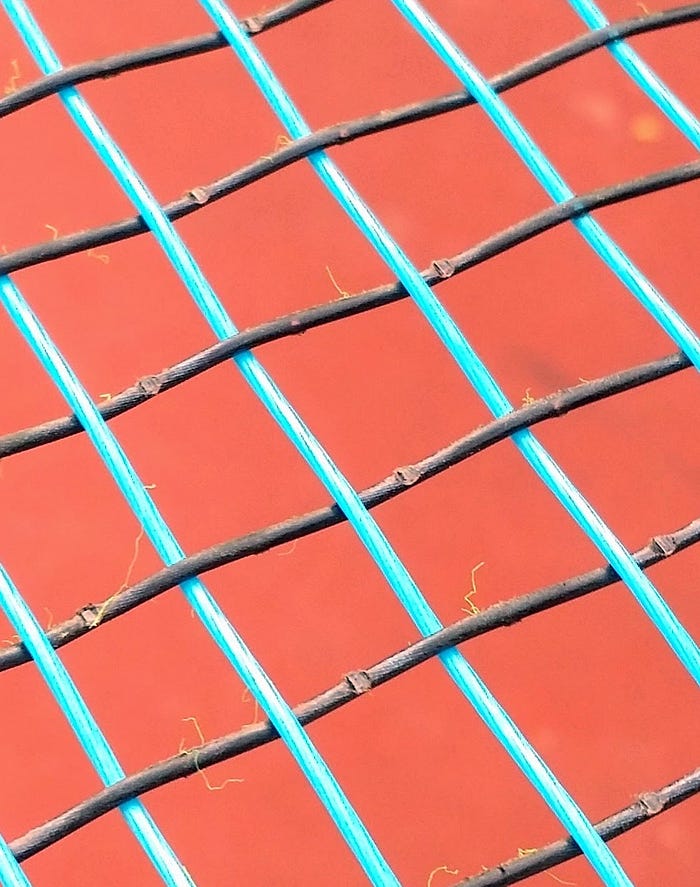
Breaking (without notching)
Yet, sometimes strings suddenly break and yet they seem hardly worn. This usually happens at the point where the string flexs next to the grommet, because the grommet does not want to bend at all. But it can happen when the coating wears off, it happened to me after 40x plays with restring zero…the cross almost exploded in the racket! and there was no notch.
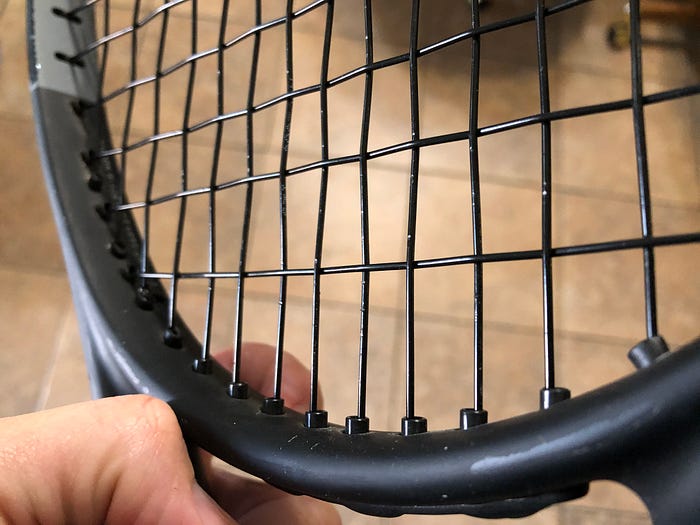
Stretching (without breaking)
Even when the string does not break, it will gradually deform. If you apply a light load, the string will snap back 99.99%, up to a limit. Ashaway tested the tensile strength of various strings in the lab gut handled 135lbs, poly 143lbs and copol 112 lbs….but the poly stetched 5%, the others stretched 11% and still snapped back.
If loads are repetitive or just too high, the string will deform. Why? Poly strings are basically a solid extruded lump of plastic (polyesther made up of repeating chains), Syn Gut are the same in nylon; and Multis are polyamides or other plastics bound together in a coating. But you can think of all of them as toothpaste without a cap. As you apply pressure the toothpaste squeezes out and gets longer and thinner as it deforms. So to with tennis strings (especially if you wear out the coating, and keep the pressure on). The tension on the string is enough to causes invariable and unstoppable stretch. How quickly? read on.
How Quickly Do Strings Stretch?
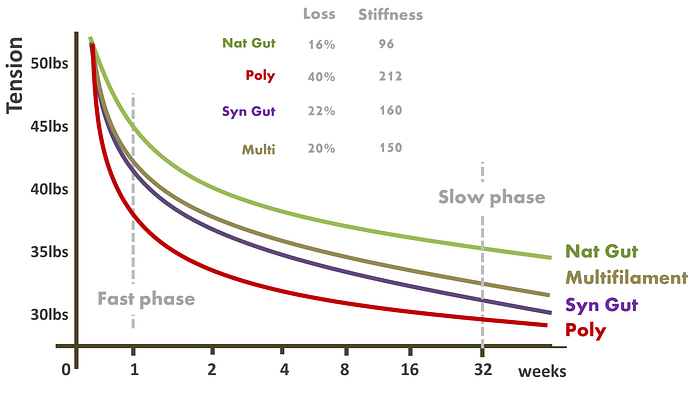
As you know, strings stretch according to their specific chemical properties +original tension + load……but the Tennis-Warehouse database shows a typical tension loss of 40% with polys vs 20% multi and 16% natural gut under stimulated normal play. Ashaway found a 15% loss for polys within 3 weeks without playing at all!
This alone suggest natural gut will last about 4x longer than most polys. As a rule of thumb, the softer the string at the start, the slower the tension loss. For example tecnifibre’s nice multi NRG2 loses only 10% between 100 and 1000 hits and another 5% to 10,000 hits.
Why does natural gut do so well? Mainly because nat gut is made of biological proteins namely collagen and elastin. Collagen’s main role is to provide structure and strength whereas Elastin’s main role is to provide stretchiness in your body; a great combination that’s been impossible to replicate.
If your strings are too tight initially, you can stretch them manually applyinging a heavy weight but they will loosen up each time you play, like this:

Summary
Strings obey the laws of physics. They snapback thousands of times, whilst getting gradually weaker and thinner. They also wear against each other surprisingly fast. The new 3rd generation of co-polys (restring zero, toroline) try even harder to minimize these effects!
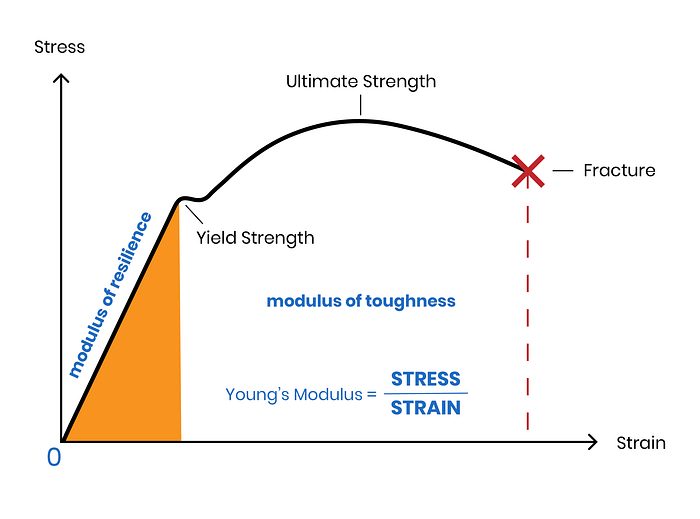
Citations


